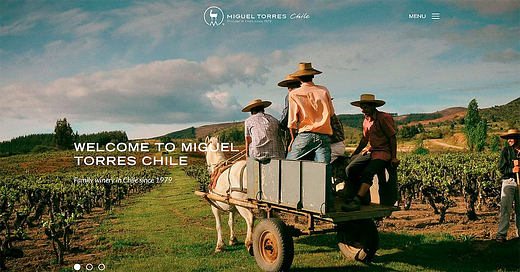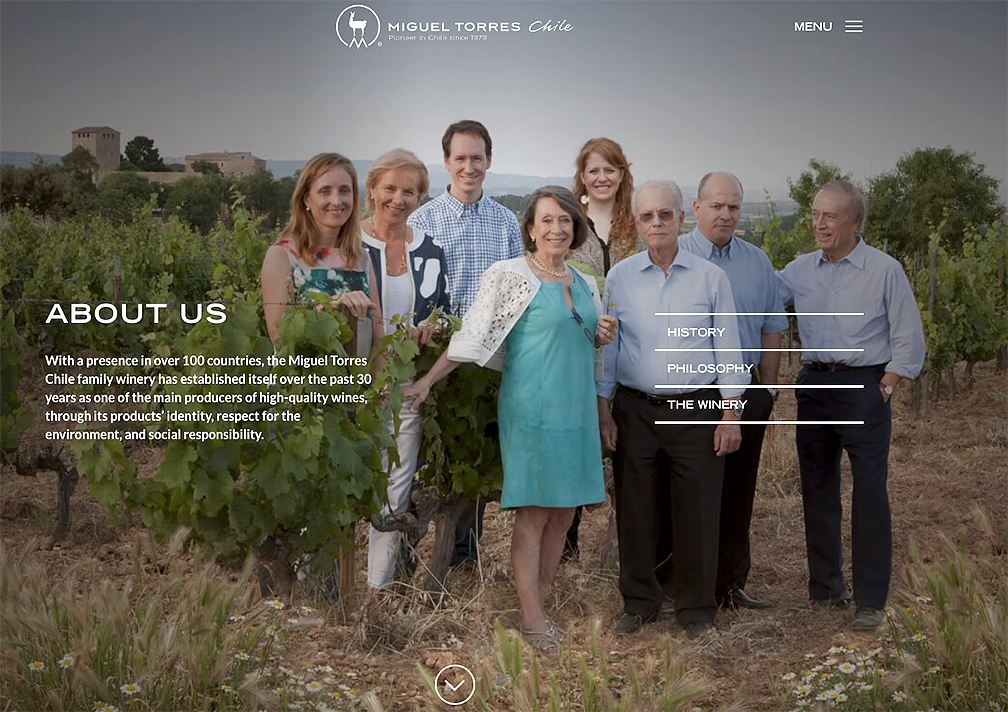Miguel Torres Carménère Peumo Cordillera Reserva Especial 2020
Winemaker operates in both Spain and Chile
Wine time humor
They took the Duracell Bunny into custody.
He was charged with battery.
Wine time.
Miguel Torres Carménère Peumo Cordillera Reserva Especial 2020
Deep purple color; raspberry, black plum, cherry, redcurrant, blackberry, eucalyptus, bell pepper, leather, toasted oak, minerality on the nose and palate.
Dry; fine, mild tannins and acidity (3.66 pH; 5.0 g/L TA); smooths out and integrates quickly with time in air, but rustic on immediate pop-pour-and-sip. Well integrated and approachable if you are patient. Medium-plus body. Impressively long finish. Easy drinker that pleases rather than challenges. Bit of ripe fruit sweetness as it develops.
Miguel Torres vineyard (from website)
Wine is 100% carménère. Fermented in stainless steel tanks with malolactic conversion in French oak barrels. Aged in French oak barrels and Austrian foudres for 12 month, mix of 16% new, remainder second or older use. 14% ABV
The Familia Torres founded the winery in 1979, becoming the first foreign wine producer in Chile. The family has produced wine in Spain for more than 150 years. They were Chilean pioneers in the use of stainless steel tanks for fermentation. All Familia Torres vineyards are certified organic. They also are leaders in Fair Trade and treatment of workers, a signature of Chilean wineries. The family continues to operate in both Spain and Chile. In 2010, Miguel Torres Maczassek became president of the family operation in Chile.
Miguel Torres family (from website)
Over the decades, Miguel Torres expanded its land holdings to some 865 acres across eight different estates, each with different climate characteristics. The diversity allows them to grow a range of grape varieties. The grapes for this effort come from their vineyard in the Cachapoal Valley. The deep soils are of alluvial origin with a clay loam texture, which means it has strong tendency to retain water. Days are very warm and nights cold due to influence of the Cachapoal River.
Carménère is a Bordeaux grape that largely was forgotten in France. In Chile is was misunderstood as Chilean merlot. Various tests proved it was carménère and it has proved to be the signature red grape of Chile. While it has many of the characteristics of merlot—softness, amiable tannins and acidity, rich and delicious red fruit without the annoying assertiveness some more strident reds bring to the glass—carménère is more complex, has higher levels of pyrazines (bell pepper, green peppercorn), and somewhat more tannins.
Miguel Torres Curicó Valley
Miguel Torres Carménère Peumo Cordillera Reserva Especial 2020 is subtle, easy drinking expression of Chile’s signature red, once mistaken for merlot and now respected in its own right. If you want a no-drama dram of red vino, this is nice place to go. Plenty of red fruits, especially nice if you give it time in glass or decant. $22-25
Pairing—grilled and roasted meats; grilled burgers, barbecue pork ribs, roast quail, lamb with mint sauce; oven-roasted or grilled lamb ribs or lamb chops; lean beef—sirloin steak, filet mignon. Spicy dishes—lamb curry, tandoori chicken, Spanish chorizo, sausage. Pasta with tomato sauces, pizza. Grilled portobello mushrooms, eggplant, lentil dishes; tacos with fresh cilantro, chiles rellenos, smoky vegetables. Cheese—manchego, pecorino, parmigiano-reggiano, boursin, aged cheddar; moderate-intensity blue cheese—la peral, gorgonzola dolce.
Miguel Torres Carménère Peumo Cordillera Reserva Especial 2020
Test your wine wisdom
WINE WIDSOM ANSWER:
“Herbaceous” literally means “herb-like” or “relating to herbs.” Aromas and flavors evoke cut grass, green vegetables (particularly bell pepper), fresh herbs, eucalyptus, pine-like scents. The characteristics principally come from chemical components called “methoxypyrazines”, usually shortened to “pyrazines.” Often found in Bordeaux varieties.
Grapes most likely to present herbaceous notes include cabernet franc (highest levels, bell pepper), carménère (high levels, vegetal), cabernet sauvignon (bell pepper, eucalyptus), merlot (moderate levels), malbec (lowest levels among Bordeaux varieties), sauvignon blanc (grass), sémillon (particularly in young wines).
Herbaceousness is desirable at lower levels, but it can become unbalancing and considered a weakness. At high levels, it presents as musty vegetable aromas, old asparagus water, steamed green pepper, unripe-green vegetables. When right, herbaceous notes harmonize with acidity, tannins, and alcohol to add depth and complexity.
Climate and vintage significantly influence herbaceousness. Cooler vintages and climates produce more herbaceousness. Unripe fruits are another contributing factor. Winemaking choices, particularly temperature and skin contact, influence herbaceousness in the cellar. With bottle age, herbaceous notes evolve into richer, honeyed, or toasty notes.
Email: wine@cwadv.com
Newsletter: gusclemens.substack.com
Website: Gus Clemens on Wine website
Facebook: facebook.com/GusClemensOnWine/posts/
Twitter (X): @gusclemens
Bluesky https://bsky.app/profile/gusclemensonwine.bsky.social .
Long form wine stories on Vocal: Gus Clemens on Vocal
Apple podcasts https://www.google.com/search?client=safari&rls=en&q=apple+podcasts+gus+clemens+apple+p…&ie=UTF-8&oe=UTF-8.
Linkedin: Gus Clemens on Wine
Links worth exploring
Diary of a Serial Hostess Ins and outs of entertaining; witty anecdotes of life in the stylish lane.
As We Eat Multi-platform storytelling explores how food connects, defines, inspires.
Dave McIntyre’s WineLine Longtime Washington Post wine columnist now on Substack. Entertaining, informative.









